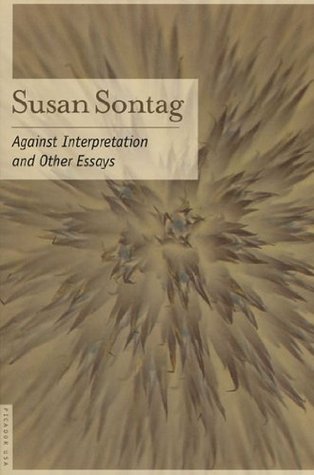More on this book
Community
Kindle Notes & Highlights
In art, “content” is, as it were, the pretext, the goal, the lure which engages consciousness in essentially formal processes of transformation. This is how we can, in good conscience, cherish works of art which, considered in terms of “content,” are morally objectionable to us.
rey and 1 other person liked this
(The difficulty is of the same order as that involved in appreciating works of art, such as The Divine Comedy, whose premises are intellectually alien.)
Because they project the complex movements of intelligence and grace and sensuousness, these two films of Riefenstahl (unique among works of Nazi artists) transcend the categories of propaganda or even reportage.
A work of art, so far as it is a work of art, cannot—whatever the artist’s personal intentions—advocate anything at all. The greatest artists attain a sublime neutrality.
It is immaterial that Genet’s characters might repel us in real life.
Indeed, in this notion of the annihilation of the subject we have perhaps the only serious criterion for distinguishing between erotic literature or films or paintings which are art and those which (for want of a better word) one has to call pornography.
Genet has recently said that he now thinks that if his books arouse readers sexually, “they’re badly written, because the poetic emotion should be so strong that no reader is moved sexually. Insofar as my books are pornographic, I don’t reject them. I simply say that I lacked grace.”
The objection that this approach reduces art to mere “formalism” must not be allowed to stand.
And the world is, ultimately, an aesthetic phenomenon. That is to say, the world (all there is) cannot, ultimately, be justified. Justification is an operation of the mind which can be performed only when we consider one part of the world in relation to another—not when we consider all there is.
Thus, form—in its specific idiom, style—is a plan of sensory imprinting, the vehicle for the transaction between immediate sensuous impression and memory (be it individual or cultural).
For, if one does not perceive how a work repeats itself, the work is, almost literally, not perceptible and therefore, at the same time, not intelligible.
For instance, every style embodies an epistemological decision, an interpretation of how and what we perceive.
Every style is a means of insisting on something.
Even the simplest sensation is, in its totality, indescribable.
In the greatest art, one is always aware of things that cannot be said (rules of “decorum”), of the contradiction between expression and the presence of the inexpressible. Stylistic devices are also techniques of avoidance. The most potent elements in a work of art are, often, its silences.
The journal gives us the workshop of the writer’s soul.
As a man, he suffers; as a writer, he transforms his suffering into art. The writer is the man who discovers the use of suffering in the economy of art—as the saints discovered the utility and necessity of suffering in the economy of salvation.
it is mainly in the form of a consideration of his capabilities and prospects.
Pavese shows himself as tormented by a profound sense of sexual inadequacy, which he bulwarked by all sorts of theories about sexual technique, the hopelessness of love, and the sex war. Remarks on the predatoriness, the exploitativeness of women are interspersed with confessions of his own failure to love, or to provide sexual satisfaction.
Pavese, who never married, records in the journal the reactions to a number of long affairs and casual sexual experiences, usually at the point when he is expecting trouble or after they actually have failed. The women themselves are never described; the events of the relationship are not even alluded to.
What one takes to be an attachment to another person is unmasked as one more dance of the solitary ego.
In the Aristotelian tradition of art as imitation, the writer was the medium or vehicle for describing the truth about something outside himself.
In the modern tradition (roughly, Rousseau forward) of art as expression, the artist tells the truth about himself. Therefore it was inevitable that a theory of love as an experience or revelation of oneself, deceptively presented as an experience or revelation of the value of a loved person or object, should suggest itself.
Love, like art, becomes a medium of self-expression. But because making a woman is not as solitary an act as making a novel ...
This highlight has been truncated due to consecutive passage length restrictions.
cinema today is the failure of love. (When we encounter the opposite statement, as for instance in Lady Chatterley’s Lover or in Louis Malle’s film The Lovers, we incline to describe it as a “fairy tale.”) Love dies because its birth was an error. However, the error remains a necessary one, so ...
This highlight has been truncated due to consecutive passage length restrictions.


